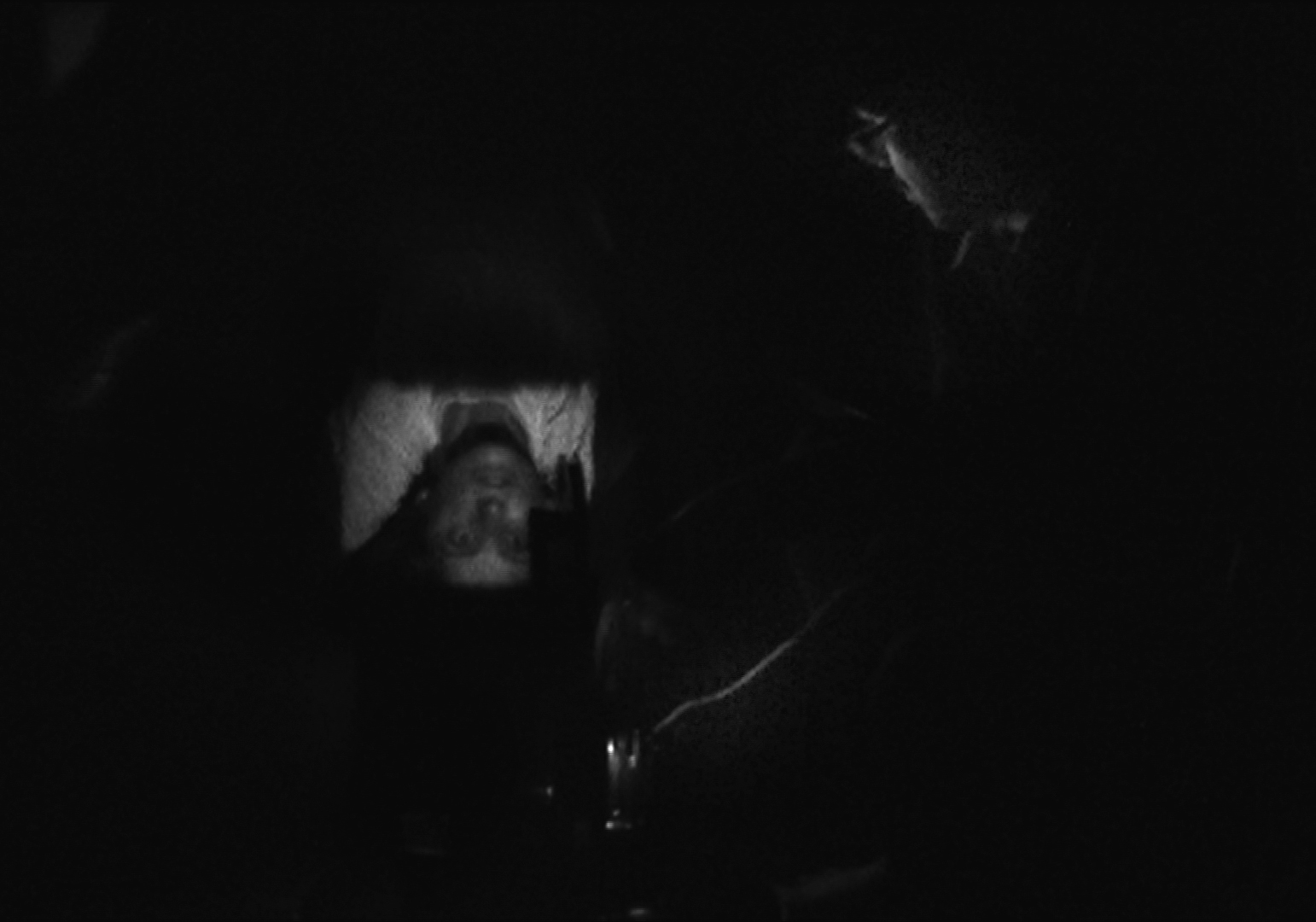Ptarmigan existed as a project space in Vallila from 2009-2011 and a mobile curatorial/creative platform until 2014. We no longer exist as an organised collective, but this website will continue to serve as an archive of the activities produced as/at Ptarmigan during these years.

ASTEPBACK are Gaëlle Cavalieri and Andrea Saggiomo.
Two super-8 film projectors and a slide projector are used as light sources on stage. Super8 films and slides are prepared by scratching and patching, piercing and ink and wax drawing to be used in a multiple projection at different speeds. The projectors, the film and the images are then used as instruments to produce and modify in real time the light and, using some self-made photosensitive sound devices, the sound-space of the performance, interacting with the motion of bodies. The audio signal so generated and manipulated feeds a feedback loop that interacts and changes with the stage movement.
In 2007 the two founded their own theater company in Naples. In 2008 they won Nuove Sensibitità Award with the show “Canti di Maldoror” (“Songs of Maldoror”). In 2009 they won “Cantieri Teatrali per Fabbrica Europa” Award with the show “I fiori d’Arancio” (“Orange Flowers”). Both shows have been represented in different Italian cities at national and international festivals. Their last show, “Villon: il Romanzo del Peto del Diavolo” (“Villon: The Romance of the Devil’s Fart”) premiered in Naples in November 2011. Since 2010 they collaborate organizing the festival “ALTERA: pratiche non convenzionali” where they have been working together with different musicians and artists (SEC_, Aspec (t), Dario Sanfilippo, Asp, Tiziana Salvati, etc.). Andrea Saggiomo alongside the theatrical performance art works in the expanded cinema project 70fps in the context of which he improvised and collaborated with musicians and international artists including Andy Guhl and Seppo Renvall. The first DVD of 70fps, entitled “But You Are” was released in 2013 for the independent label VIANDE.
Plucié des Andes are Marek Pluciennik and James Andean of Helsinki.
Plucié/Des Andes are film artist Marek Pluciennik and sound artist James Andean. Together they have developed a unique audiovisual performance practice, drawing on the diverse background each has in their respective fields, seamlessly blending film, sound art, and performance art.
Marek Pluciennik emphasises the tactile qualities of film, not just as a vessel for content, but as a material medium, by treating and transforming the film during the act of projection, most commonly by melting and burning the film as it is projected on the screen, as well as through the digital capture and transformation of both materials and process. The visual results are thus a combination of the film content, and the beautiful, strangely transfixing display of colour and texture as the film bubbles, melts, and dissolves. The results capture the transitory, ephemeral nature of experience, art, and performance, as images, scenes, narratives, and people melt away on the screen. Pluciennik's live treatment of the film extends into the digital – as these physical metamorphoses are recaptured, digitally treated and transformed, and projected anew – and also into the realm of performance art, as his methods are played out in front of, within, and around the audience, sometimes requiring the participation of audience members, and often extending into broader metaphors of performance action.
James Andean creates live soundscapes to accompany and dialogue with the projected visuals. These soundscapes are often centred on live, site-specific sound, using the sound artefacts of the venue, the space, the audience, or the film projection as primary sound materials, to be further developed and extended live in the spontaneity of performance, creating a soundworld which once again stresses the fleeting impermanence of the experience of live art. Once again, these live, physical elements are captured, digitally extended and transformed, and projected as fantastic constructs moving out from their foundation in the here-and-now and out into broader realms of sound.
These two layers – the sonic and the visual – combine and react, to create a unique, beautiful experience of shifting images, scenes, colours and textures, from both screen and loudspeakers.